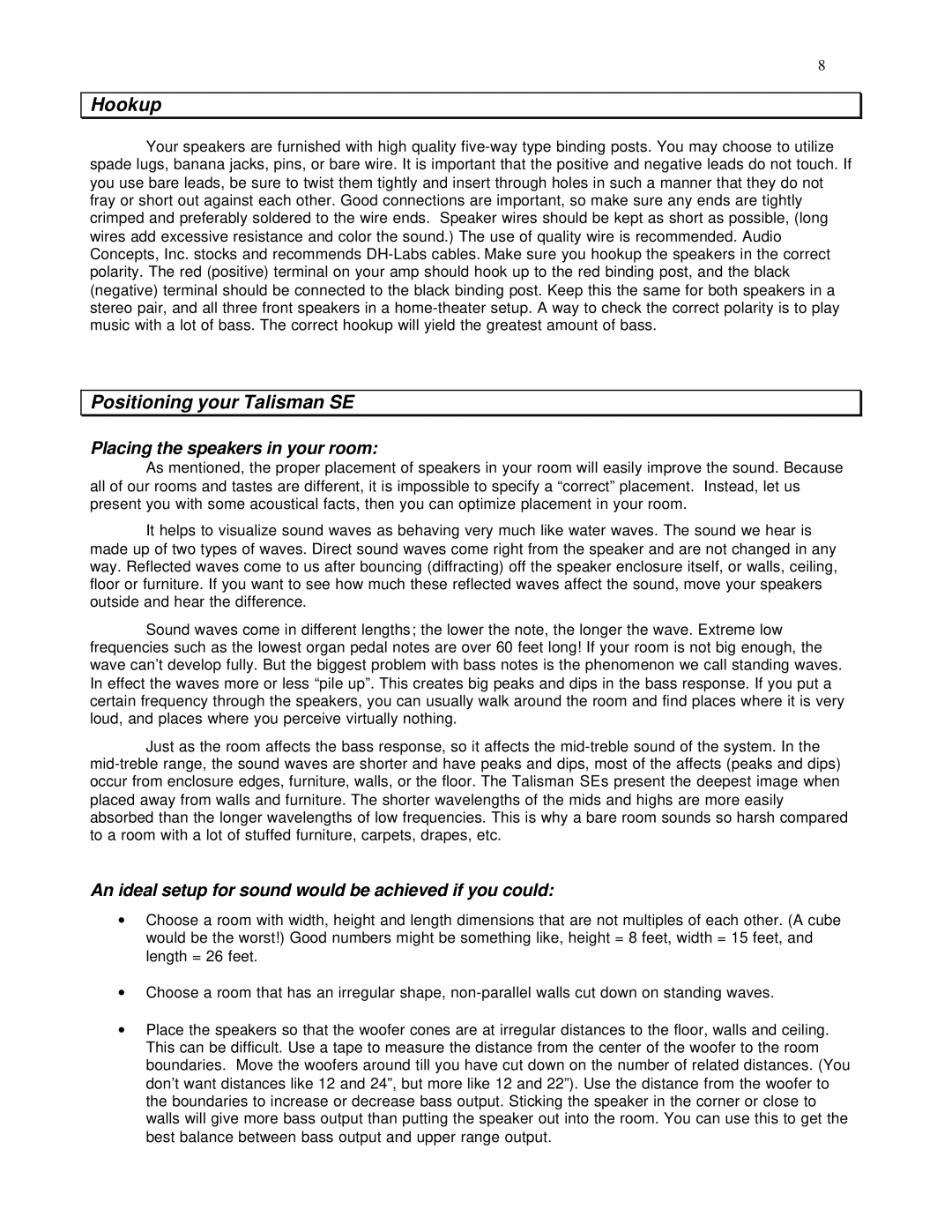
8
Hookup
Your speakers are furnished with high quality
Positioning your Talisman SE
Placing the speakers in your room:
As mentioned, the proper placement of speakers in your room will easily improve the sound. Because all of our rooms and tastes are different, it is impossible to specify a “correct” placement. Instead, let us present you with some acoustical facts, then you can optimize placement in your room.
It helps to visualize sound waves as behaving very much like water waves. The sound we hear is made up of two types of waves. Direct sound waves come right from the speaker and are not changed in any way. Reflected waves come to us after bouncing (diffracting) off the speaker enclosure itself, or walls, ceiling, floor or furniture. If you want to see how much these reflected waves affect the sound, move your speakers outside and hear the difference.
Sound waves come in different lengths; the lower the note, the longer the wave. Extreme low frequencies such as the lowest organ pedal notes are over 60 feet long! If your room is not big enough, the wave can’t develop fully. But the biggest problem with bass notes is the phenomenon we call standing waves. In effect the waves more or less “pile up”. This creates big peaks and dips in the bass response. If you put a certain frequency through the speakers, you can usually walk around the room and find places where it is very loud, and places where you perceive virtually nothing.
Just as the room affects the bass response, so it affects the
An ideal setup for sound would be achieved if you could:
∙Choose a room with width, height and length dimensions that are not multiples of each other. (A cube would be the worst!) Good numbers might be something like, height = 8 feet, width = 15 feet, and length = 26 feet.
∙Choose a room that has an irregular shape,
∙Place the speakers so that the woofer cones are at irregular distances to the floor, walls and ceiling. This can be difficult. Use a tape to measure the distance from the center of the woofer to the room boundaries. Move the woofers around till you have cut down on the number of related distances. (You don’t want distances like 12 and 24”, but more like 12 and 22”). Use the distance from the woofer to the boundaries to increase or decrease bass output. Sticking the speaker in the corner or close to walls will give more bass output than putting the speaker out into the room. You can use this to get the best balance between bass output and upper range output.
